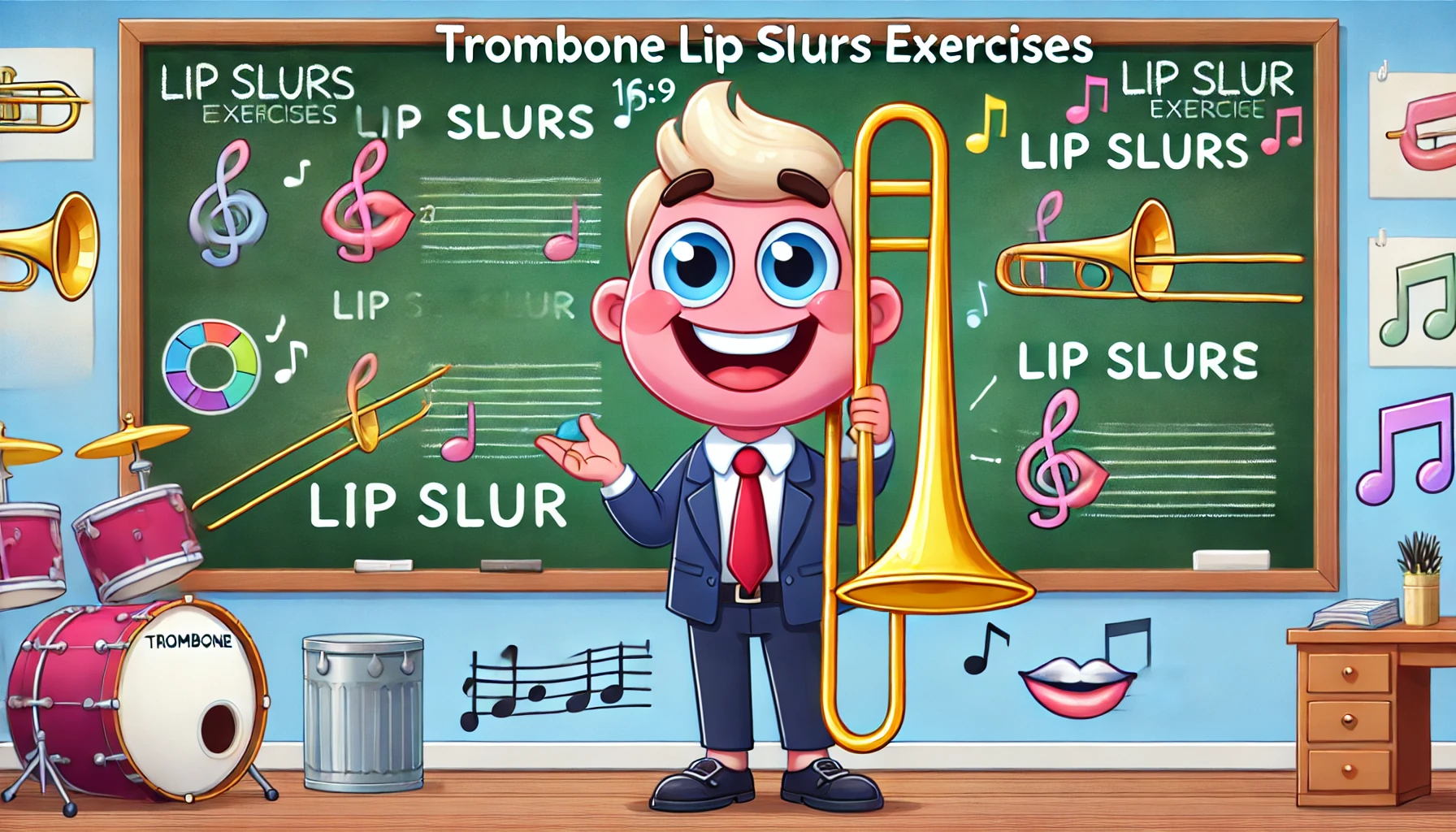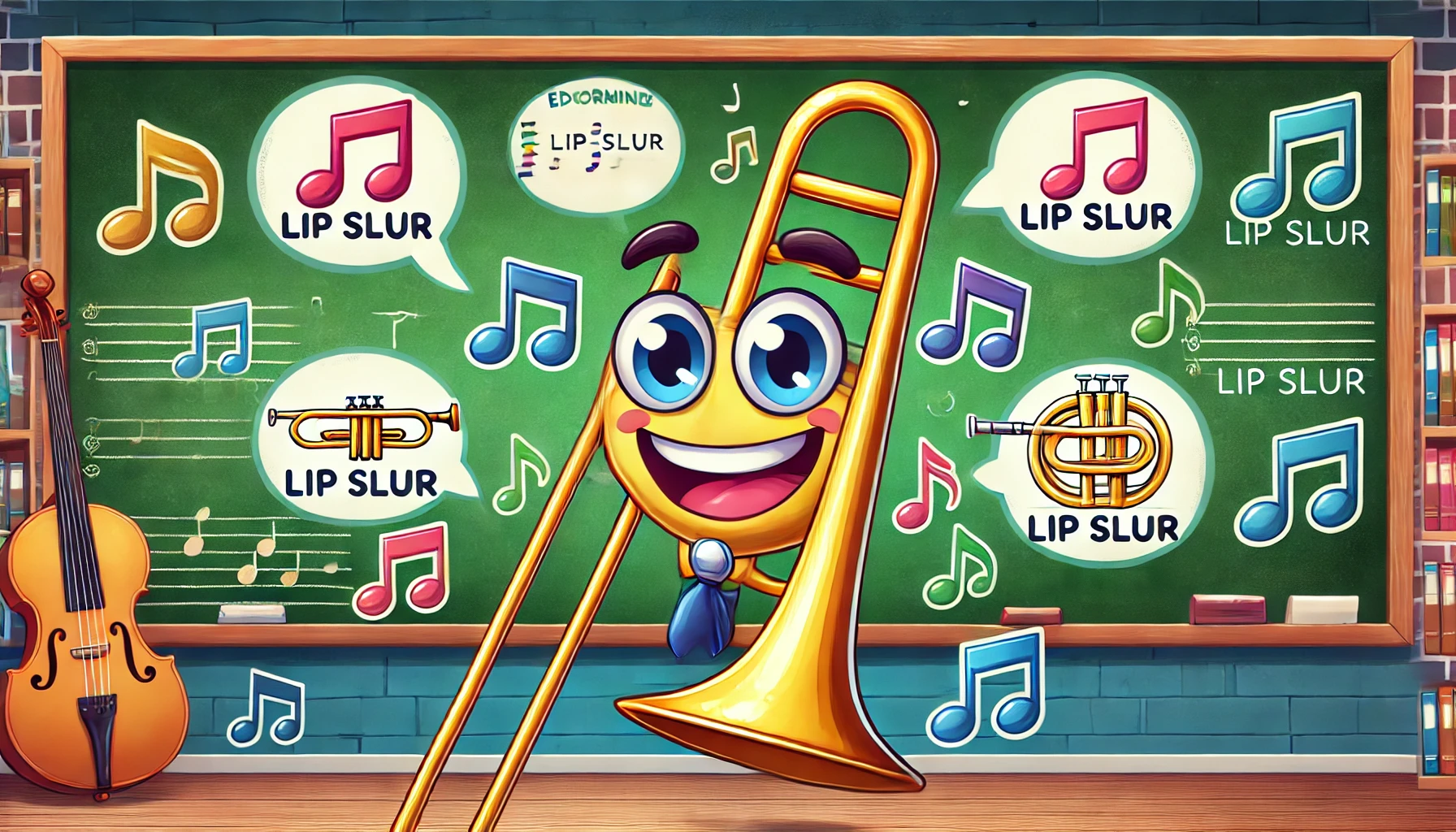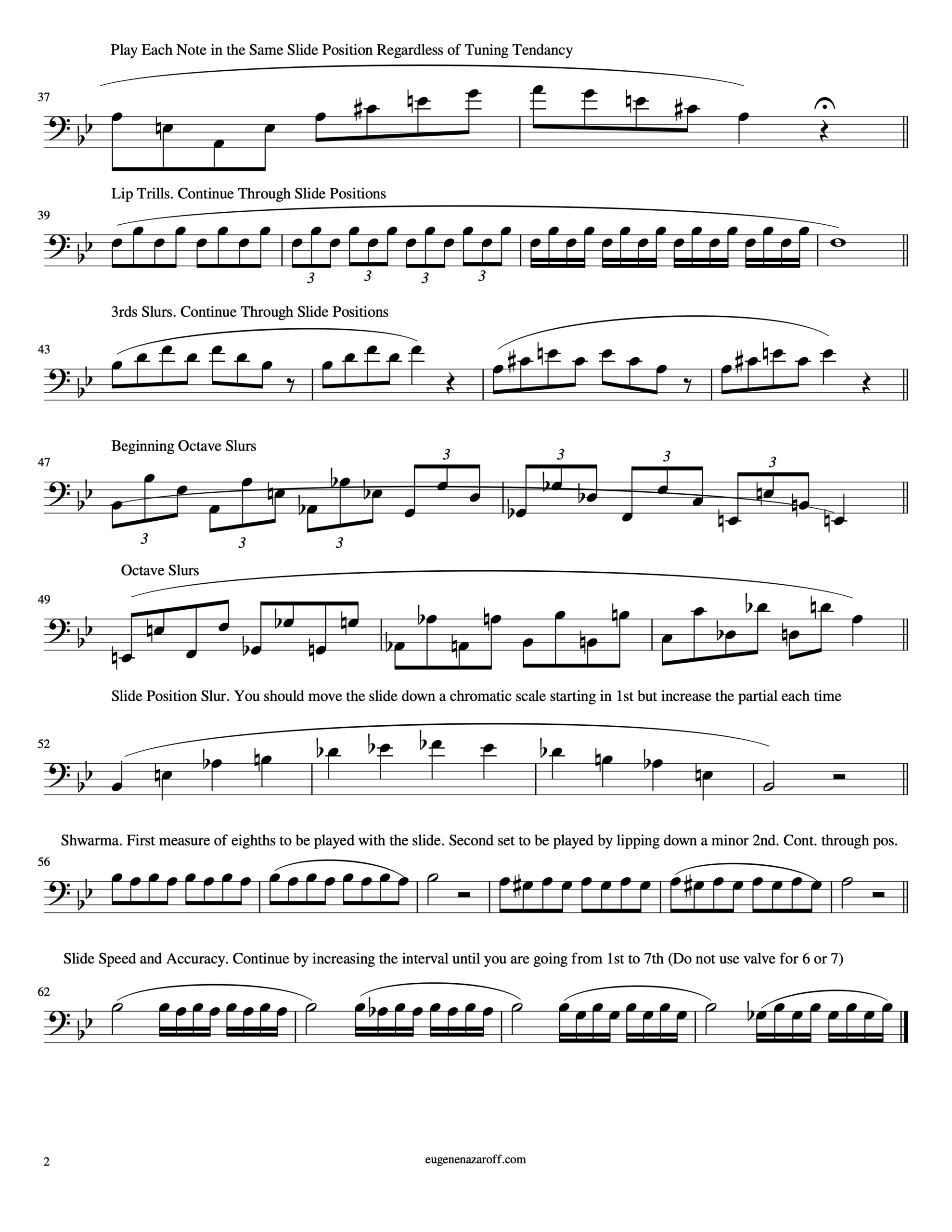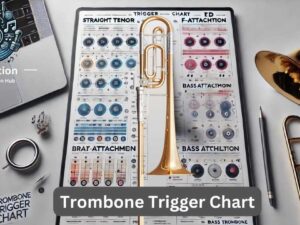Best Trombone Lip Slurs: 2-Page Beginner Essential Warm-Up
Original price was: $0.65.$0.00Current price is: $0.00.
Discover how to perfect your trombone technique with Ryan Meyaard’s comprehensive lip slur warm-up exercises. This guide breaks down each exercise, offering expert tips to enhance your flexibility, tone, and overall playing prowess.
Description
Trombone lip slurs are a crucial technique for brass players (especially us trombone enthusiasts). These exercises involve smoothly transitioning between notes without using the tongue or slide, relying solely on lip control. Ryan Meyaard’s warm-up exercises (which I’m about to break down for ya) are a goldmine for developing this skill. Lip slurs help improve flexibility, tone quality, and endurance (trust me, your chops will thank you later). They’re suitable for players of all levels, from beginners to advanced trombonists. By practicing these exercises regularly, you’ll notice significant improvements in your overall playing (I promise, it’s like magic for your embouchure).
MusicSheetViewerPlugin 4.1Trombone Lip Slurs: Sheet Music Overview
The sheet music provided — by Ryan Meyaard — is a comprehensive set of lip slur warm-up exercises for trombone. Here’s a quick rundown:
- Tempo: ♩ = 55 BPM (take it slow and steady, folks)
- Key Signature: B♭ (B flat — our good ol’ friend)
- Time Signature: 4/4 (keeping it classic)
The exercises progress from 2-note lip slurs to more complex patterns, including:
- 3-note and 4-note lip slurs
- High and low register exercises
- Octave slurs and thirds
- Slide position exercises
- Lip trills and “Shwarma” technique (more on that later)
Each section focuses on different aspects of lip control and slide technique (it’s like a full-body workout for your trombone skills).
Trombone Lip Slurs: Step-by-Step Breakdown of the Exercise
- **2-Note Lip Slurs** (measures 1-8):
- Start with simple alternations between two notes
- Focus on smooth transitions without using your tongue
- **3-Note Lip Slurs** (measures 9-15):
- Expand to three-note patterns
- Maintain consistent airflow throughout the slur
- **4-Note Lip Slurs** (measures 17-23):
- Increase complexity with four-note patterns
- Pay attention to intonation as you move between partials
- **Low Register Lip Slurs** (measures 25-30):
- Practice in the lower register
- Use all slide positions, including F attachment for bass trombones
- **High Register Lip Slurs** (measures 31-36):
- Focus on the upper register
- Maintain embouchure flexibility as you ascend
- **Lip Trills** (measure 39):
- Rapid alternation between adjacent partials
- Keep your embouchure relaxed but controlled
- **3rds Slurs** (measures 43-46):
- Practice slurring in thirds through different slide positions
- Focus on smooth transitions between intervals
- **Octave Slurs** (measures 47-51):
- Work on large interval jumps
- Maintain consistent tone quality across registers
- **Slide Position Slur** (measure 52):
- Move the slide chromatically while increasing the partial
- Develop coordination between lip and slide movement
- **”Shwarma” Technique** (measures 56-59):
- Alternate between slide movement and lipping down a minor 2nd
- Develop fine control over pitch adjustments
- **Slide Speed and Accuracy** (measures 62-65):
- Increase intervals progressively from 1st to 7th position
- Focus on precise slide placement and quick movements
Trombone Lip Slurs: Technical Detail and Musical Analysis
Ryan Meyaard‘s lip slur exercises are designed to target various aspects of trombone technique (it’s like a Swiss Army knife for your playing). The progression from simple to complex patterns helps build embouchure strength and flexibility gradually. The exercises utilize the harmonic series (those natural overtones we love) to develop smooth transitions between partials. This focus on partials is crucial for trombone players, as it forms the basis of our instrument’s unique sound production (it’s what makes us different from those valve-y instruments).
The inclusion of slide position exercises (like the “Slide Position Slur” in measure 52) helps develop the coordination between lip flexibility and slide technique. This is essential for accurate intonation and smooth legato playing (no more sloppy slides, folks). The “Shwarma“ technique (measures 56-59) is particularly interesting. It combines slide movement with fine pitch adjustments using the embouchure (it’s like embouchure gymnastics). This exercise develops micro-adjustments in pitch, crucial for playing in tune across all registers.
Trombone Lip Slurs: Common Challenges and How to Overcome Them
- **Inconsistent Tone Quality**
- Challenge: Tone may weaken or become airy during slurs
- Solution: Focus on maintaining steady airflow throughout the exercise (imagine blowing through a straw)
- **Difficulty with Large Intervals**
- Challenge: Struggling with octave slurs or wide leaps
- Solution: Practice smaller intervals first, gradually expanding the range (Rome wasn’t built in a day, and neither is your range)
- **Slide Coordination Issues**
- Challenge: Slide movements disrupting smooth slurs
- Solution: Practice slide movements separately, then integrate with lip slurs slowly
- **Fatigue or Strain**
- Challenge: Embouchure tiring quickly during practice
- Solution: Take frequent breaks and build endurance gradually (no need to be a hero)
- **Inaccurate Pitch in Upper Register**
- Challenge: Notes in higher partials tend to be sharp
- Solution: Use a tuner and focus on hearing the pitch before playing (your ears are your best friends)

Trombone Lip Slurs: Tips for Effective Practice
- Start SLOW and gradually increase tempo (patience is a virtue, my friends)
- Use a metronome to maintain a steady rhythm (it’s annoying but necessary)
- Practice in front of a mirror to monitor embouchure and posture
- Record yourself and listen back critically (it’s painful but effective)
- Alternate between loud and soft dynamics to develop control
- FOCUS on one section at a time before tackling the entire exercise!!
- Incorporate these exercises into your daily warm-up routine (consistency is key)
How This Exercise Benefits Overall Trombone Playing
Mastering lip slurs through Meyaard’s exercises will significantly improve your overall trombone playing (I’m not exaggerating — it’s like leveling up in a video game). Here’s how:
- Enhanced Flexibility — Smooth transitions between notes in all registers (no more awkward jumps)
- Improved Tone Quality — Consistent sound across your entire range (bye-bye, weak high notes)
- Better Endurance — Strengthened embouchure for longer playing sessions (marathon gigs, here we come)
- Increased Range — Gradual expansion of your comfortable playing range (high notes for days)
- Refined Intonation — Better control over the pitch in all registers (your section mates will thank you)
These skills translate directly to ACTUAL music performance. Whether you’re playing jazz, classical, or any other genre, the control and flexibility developed through these exercises will shine through in your playing (trust me, your bandmates will notice).
Related Exercises and Next Steps
To complement Meyaard’s trombone lip slurs, consider incorporating these related practices:
- Long Tone Exercises — Focus on sustaining notes with a consistent tone (it’s like yoga for your embouchure)
- Articulation Studies — Practice various tonguing patterns to complement your slurring skills
- Scale Exercises — Apply lip slurs to scale patterns for practical application — Check my post with “Trombone Scale Chart PDF To Learn It FAST”
- Also, check my”Easy Trombone Trigger Chart PDF” — Unlock your horn’s full potential!!
As you progress, challenge yourself with more advanced lip slur patterns and increase the tempo gradually. Remember, consistent practice is key to mastering these techniques (Rome wasn’t built in a day, and neither is your trombone prowess). By incorporating these exercises into your daily routine, you’ll be well on your way to becoming a lip slur master (and impressing all your trombone buddies). So grab your horn, fire up that metronome, and let’s get slurring!
Additional information
| Instrument | Trombone |
|---|---|
| Level | Beginner |
| Type | Sheet Music |









Reviews
There are no reviews yet.